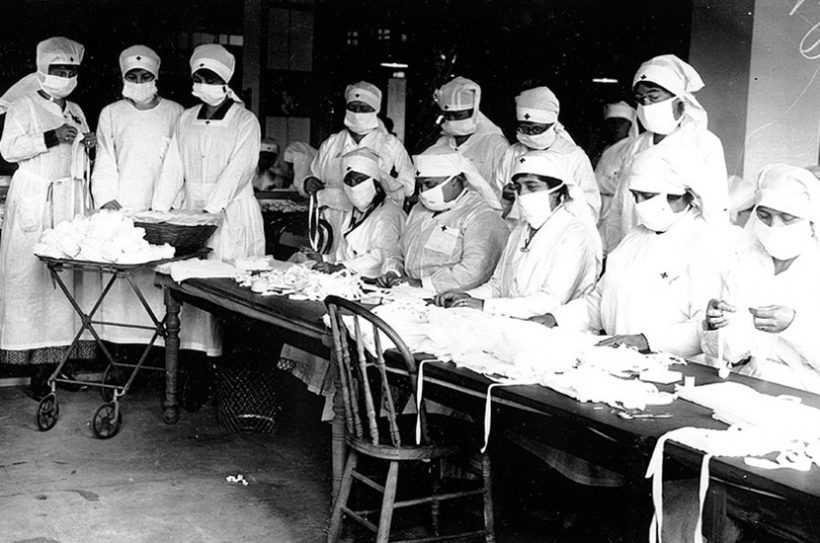LIVE AND LEARN
To share your thoughts goto: barney@thetimetraveller.ca.
1999
Like many we have a collection of Reader’s Digests accumulated over years. What to do with them for they have an abundance of interesting stories and reflect another time and often rekindle memories.
In the November 1999 edition (Remember everyone was worried about the impending doom of the 2000 date change?) was an article “Are We Ready for the Next Flu Epidemic?” by Rachel Wildavsky and Claudia Cornwall which talked about a flu virus capable of jumping from animals to people with the loss of millions of lives. “Health experts worry it could happen again.” I imagine much of the following will look familiar.
Some Background
The Flu mutates, changes, which in part explains why the success of flu shots varies year to year as medical authorities try to predict what flu shot to administer. We tend to carry flus in our respiratory tracts and spread them by coughing or sneezing making them highly contagious.
Many can recall stories about the Spanish Flu of 1918, a pandemic that took many lives. My maternal grandmother was a milkmaid who travelled from house to house delivering milk. She had a cart for the milk container and a pony. Customers would place their order and with a pitcher ‘Mom’, as I always called her, would dip the pitcher into the milk and pour out their order. Not too sanitary by to-day’s standards.
When a household failed to respond to ‘Mom’s’ knock on the door after a few times she would notify the authorities and often they would discover that everyone in that household had succumbed to the flu. Not a pleasant memory.
In March 1997 avian or bird flu broke out in Hong Kong, China. “Mortality (to chickens) was 100 percent.” But, it also killed a three-year-old boy. Flus of this type (H5) had never before been known to infect humans. Subsequently 18 healthy individuals in the prime of life were infected and five died.
Dr. John Spika, director of the Laboratory Centre for Disease Control, Ottawa said: “If the Hong Kong virus had developed the ability to spread efficiently among people, we would have faced a crisis along the lines of the 1918 pandemic.”
The Spanish flu spread globally in months; to-day air travel spreads it more efficiently, more quickly.
“We can expect another pandemic in the next five to ten years,” Spika predicted, “and we are nowhere near being able to produce enough vaccine to immunize 30 million Canadians quickly.”
The article stated that to avoid being surprised all nations need to improve surveillance. “In no place is greater surveillance more urgently needed than in China. Mainland China is believed to be where most new flu strains emerge, because species that carry different flues – people, pigs, chickens, ducks and geese – live close together there sometimes under the same roof.”
Dr. Spika suggested developing a base vaccine for each of the subtypes that can cause influenza pandemics. This would allow us to create the specific variety needed to combat a specific flu more quickly.
The article continued that in a serious pandemic hospital beds won’t be the only problem. In Hong Kong the sick who survived required respirators. “But there are only so many respirators available in Canada.”
The Hong Kong outbreak caused Canadian health authorities to re-examine our pandemic plans. “One change: Health Canada, responsible for selecting our flu vaccine suppliers, plans to sign contracts with Canadian producers only.”
Elinor Caplan, former parliamentary secretary to Health Minister Allan Rock, said: “The concern is that other countries might place an embargo on exports of vaccine during a pandemic. It is important to build up the capacity of Canadian manufacturers.” The good news about the Hong Kong scare is that it may serve as a wake-up call.
We live and we learn. But is that enough? Don’t we need to put what we learn to work?
Photo – cdc.gov. – Red Cross volunteers 1918.
